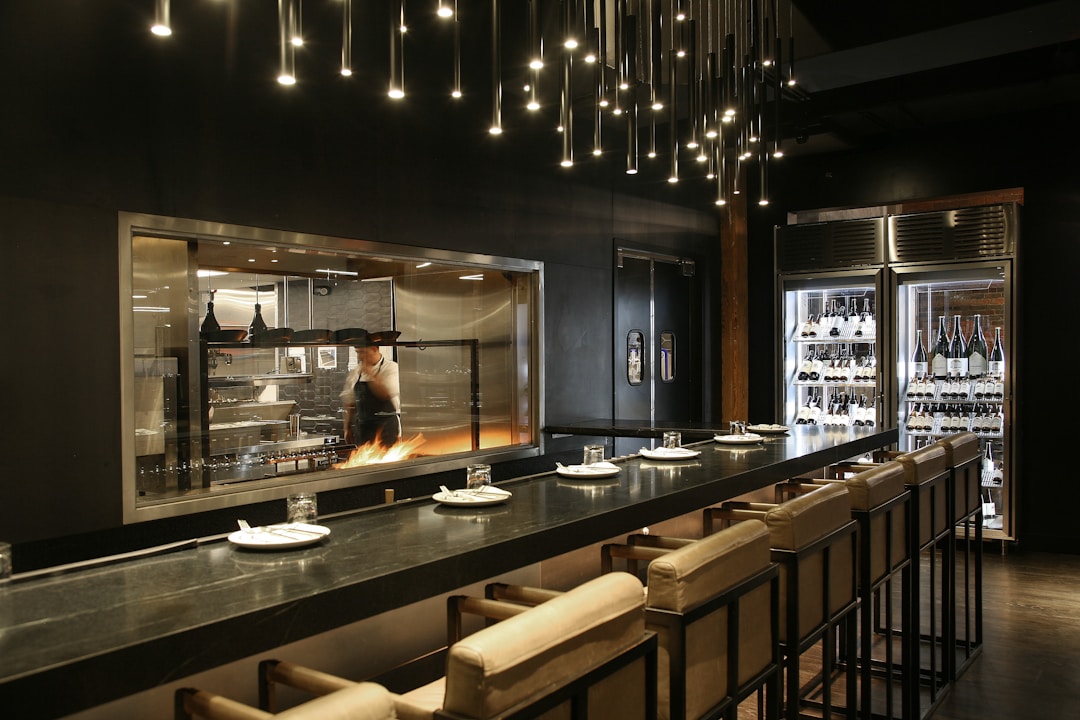In an ever-evolving world where technology increasingly influences every aspect of our lives, the food service industry is no exception. From contactless payments to delivery apps, technology has significantly transformed the way restaurants operate. One of the most revolutionary changes has been the adoption of food service automation. This new approach offers numerous benefits that can drastically improve efficiencies, reduce costs and improve customer service. In this article, we delve into several innovative and efficient solutions for restaurants.
The Rise of Automated Kitchens

Over the past few years, food service automation has infiltrated our kitchens, transforming the way food is prepared and served. The adoption of automation has introduced kitchen appliances that can perform complex tasks, from chopping vegetables to baking pastries. This reduces manual labor and boosts consistency in food preparation. These automated machines are designed to work in harmony, leading to seamless operations within the kitchen. This is so that each dish is cooked to perfection. It also substantially enhances the speed of service, which can benefit both management and your customers.
Additionally, automated kitchens are designed with an increased emphasis on hygiene. The machines are built to maintain high cleanliness standards, reducing the chance of contamination. Also, by reducing the amount of human interaction with the food, these automated solutions ensure that the food served is free from common human-induced foodborne diseases. In essence, automated kitchens present a safer, faster, and more efficient method of food preparation.
Intelligent Ordering Systems
Advancements in technology have also brought about the emergence of intelligent ordering systems. These systems use artificial intelligence and machine learning algorithms to predict customer preferences and make personalized suggestions. By analyzing past orders, these systems can recommend dishes that align with the customer’s taste, dietary preferences, and health restrictions. As a result, customers are presented with a personalized menu, increasing the chance of repeat orders.
Furthermore, intelligent ordering systems streamline the order placement process. By digitizing menus and allowing customers to place orders via tablets or touch-screen kiosks, these systems eliminate the need for waitstaff to take orders manually. This speeds up the ordering process and minimizes the chance of order errors. In consequence, restaurants can serve their customers faster and more accurately.
In addition, these systems can handle multiple orders at once, increasing service efficiency. For instance, they can prompt upselling and cross-selling opportunities based on the customer’s current selections, helping boost sales. Overall, intelligent ordering systems improve the customer experience and enhance operational efficiencies.
Inventory Management Software

The food service industry requires intricate inventory management due to the perishability of ingredients. With a high risk of spoilage and waste, efficient inventory management is critical for a restaurant’s operational efficiency and profitability. This is where inventory management software becomes an indispensable tool. This software maintains a record of all food items and ingredients, their quantities, and their expiration dates. The system then sends notifications when stocks are running low or when ingredients are nearing their expiration dates. This ensures that the kitchen never runs out of supplies and reduces food waste.
Moreover, inventory management software automates the process of ordering supplies for your restaurant. The system can automatically place orders when the stock level drops below a set limit. This eliminates manual errors and maintains a constant supply of fresh ingredients. The system also keeps a record of all purchases, making it easier for restaurant owners to track expenses and calculate the cost-effectiveness of their ordering practices.
These systems provide valuable insights into food usage patterns, helping restaurant owners make informed decisions. By analyzing the usage pattern of each ingredient, owners can identify which dishes are the most profitable and which ones are not performing well. This data-driven approach to menu planning can drastically increase a restaurant’s profitability.
Green and Sustainable Practices
In response to growing environmental concerns, many restaurants are embracing green and sustainable practices. Automated systems play a key role in this transition. Automated dishwashers, for instance, use less water and energy, reducing a restaurant’s carbon footprint. In addition, automated waste management systems segregate waste, making recycling easier and more efficient. Moreover, some restaurants are employing futuristic technologies to grow their own food.
Solutions like vertical farming and hydroponic cultivation systems automate the farming process, allowing restaurants to grow fresh produce on-site, reducing food miles, and offering customers fresher ingredients. Beyond that, advanced energy management systems efficiently control heating, lighting, and ventilation based on occupancy and time of day, reducing unnecessary energy consumption. You can also switch to using LED lights, which lower utility bills and have a longer lifespan than traditional bulbs. All these practices not only make a restaurant more eco-friendly but also result in substantial cost savings in the long run.
Cloud-based POS Systems

Cloud-based POS systems are another addition to the list of innovative solutions for restaurants. Unlike traditional POS systems, cloud-based systems store all data on a remote server, providing greater flexibility and security. Restaurant owners can access their sales data, inventory, and customer information from anywhere, at any time, facilitating better decision-making. In addition, these systems offer better scalability.
As your restaurant grows, you can easily add new features or locations without expensive hardware upgrades. Since all data is stored in the cloud, there’s minimal risk of data loss in case of hardware failure. Moreover, cloud-based POS systems integrate seamlessly with other restaurant management software, creating an all-in-one business solution. From front-of-house operations to back-end administrative tasks, everything can be managed under one roof, drastically simplifying restaurant management.
Tabletop Tablet Solutions
Tabletop tablets offer a whole new dining experience to customers. They allow customers to browse the menu, place orders, and make payments, right from their tables. With real-time updates on wait times and live tracking of their orders, customers enjoy an engaging and transparent dining experience. With features like entertainment apps and customer surveys, restaurants can keep their guests entertained and gather valuable feedback to improve their services.
More importantly, these tablets free up servers to focus on providing exceptional customer service rather than taking orders and processing payments. Tabletop tablets collect valuable data on customer preferences, ordering habits, and feedback. This data can be analyzed to understand customer behavior, optimize the menu, and devise effective marketing strategies.
Smart Delivery Solutions

The rise in online ordering has spurred the need for smart delivery solutions. Automated dispatch systems assign delivery orders to available drivers in the most efficient manner, reducing delivery times. In addition, with real-time tracking, customers can monitor their order’s progress, leading to increased customer satisfaction. Advancements in AI and robotics have given rise to delivery robots and drones.
These technologies ensure timely and contactless deliveries, enhancing customer experience. Implementing such innovative solutions can provide restaurants with a competitive edge in the crowded food delivery market. Also, with order history and customer preferences data, restaurants can provide personalized promotions and offers to repeat customers, encouraging loyalty and repeat business.
As you can see, innovative and efficient solutions like food service automation, intelligent ordering systems, and cloud-based POS systems are revolutionizing the way restaurants operate. Embracing these solutions can lead to substantial improvements in operational efficiency, customer satisfaction, and profitability. If you follow the advice in this article, then you’ll be well on your way to owning a thriving and profitable restaurant business.










